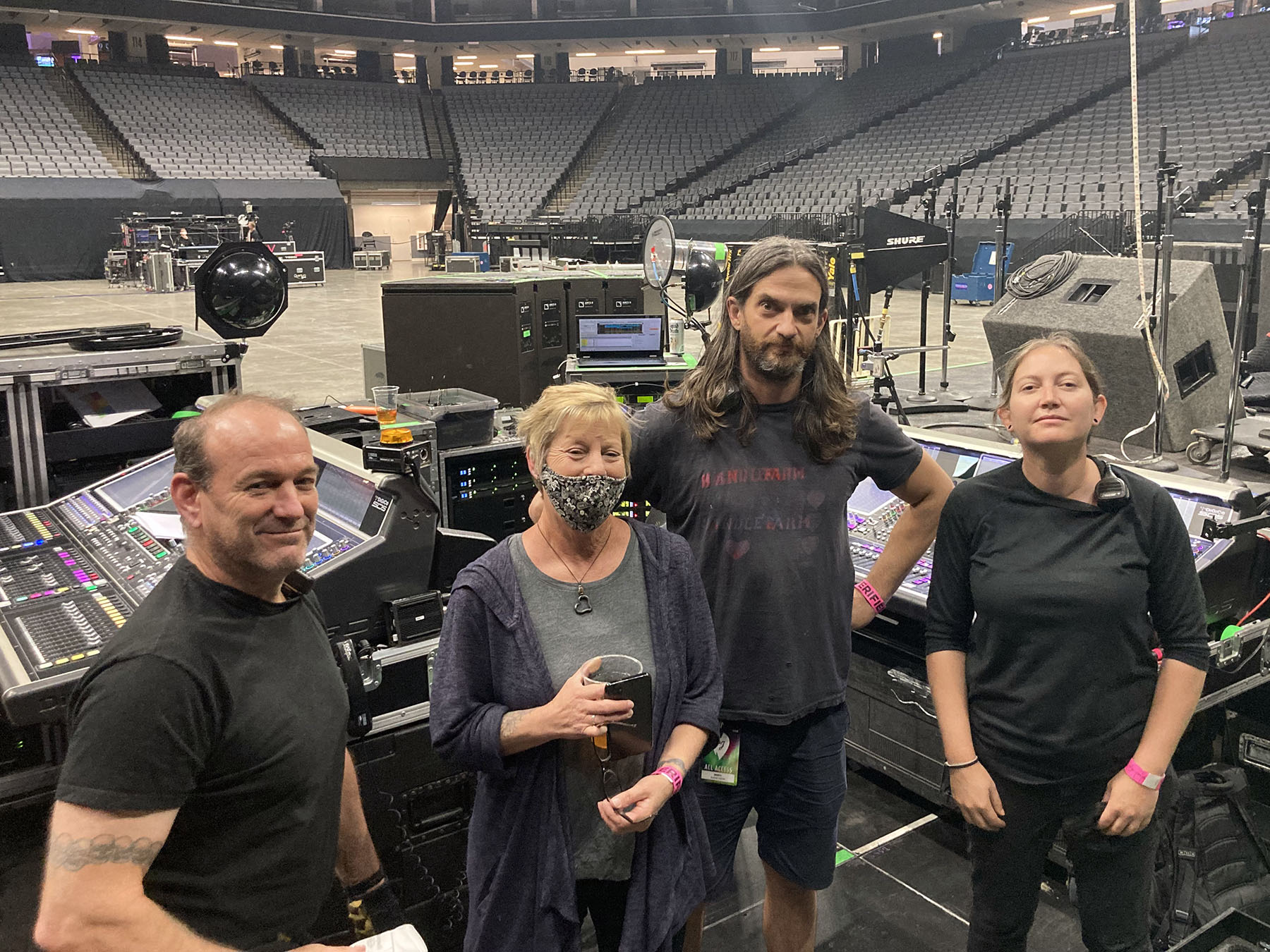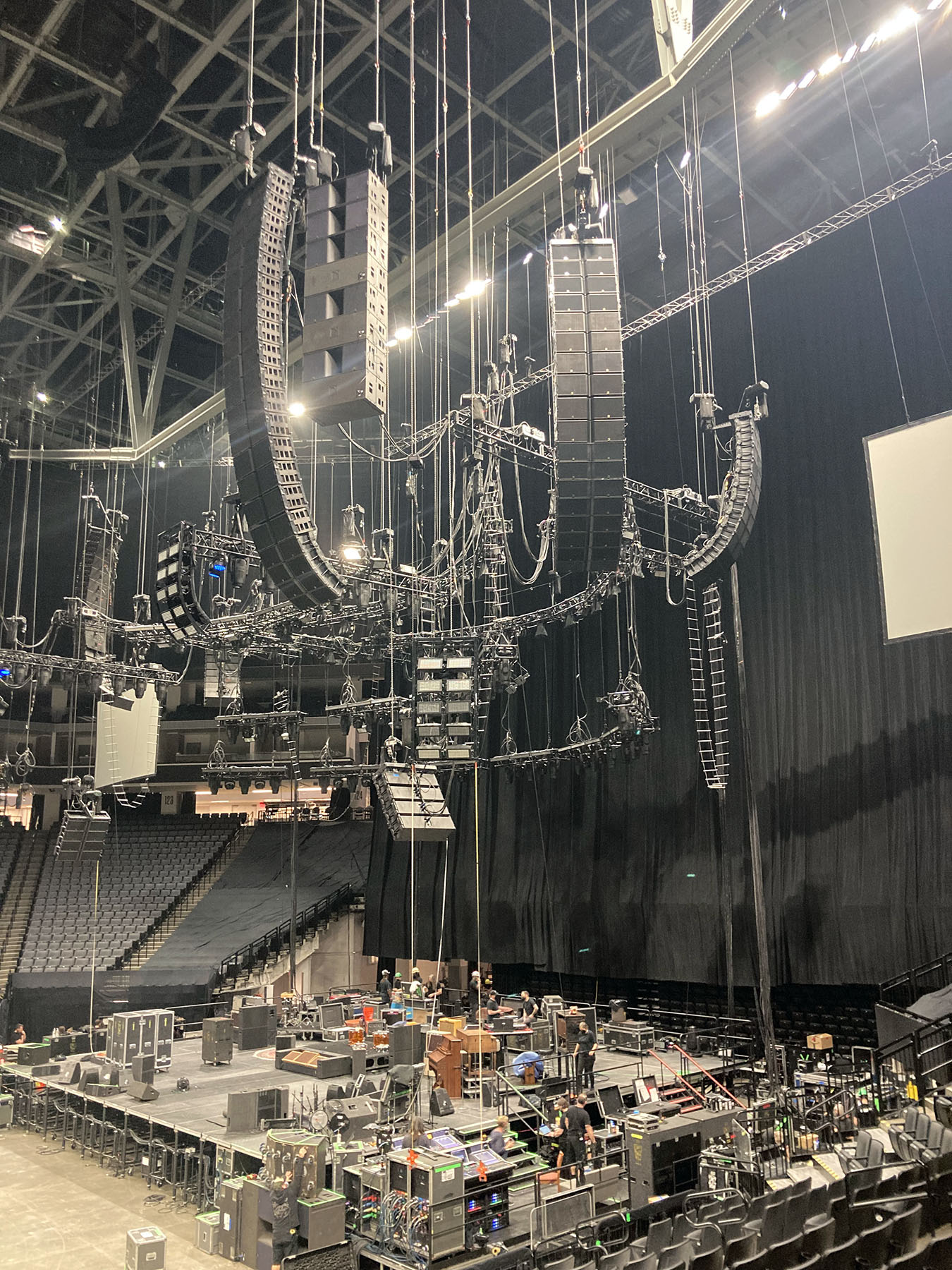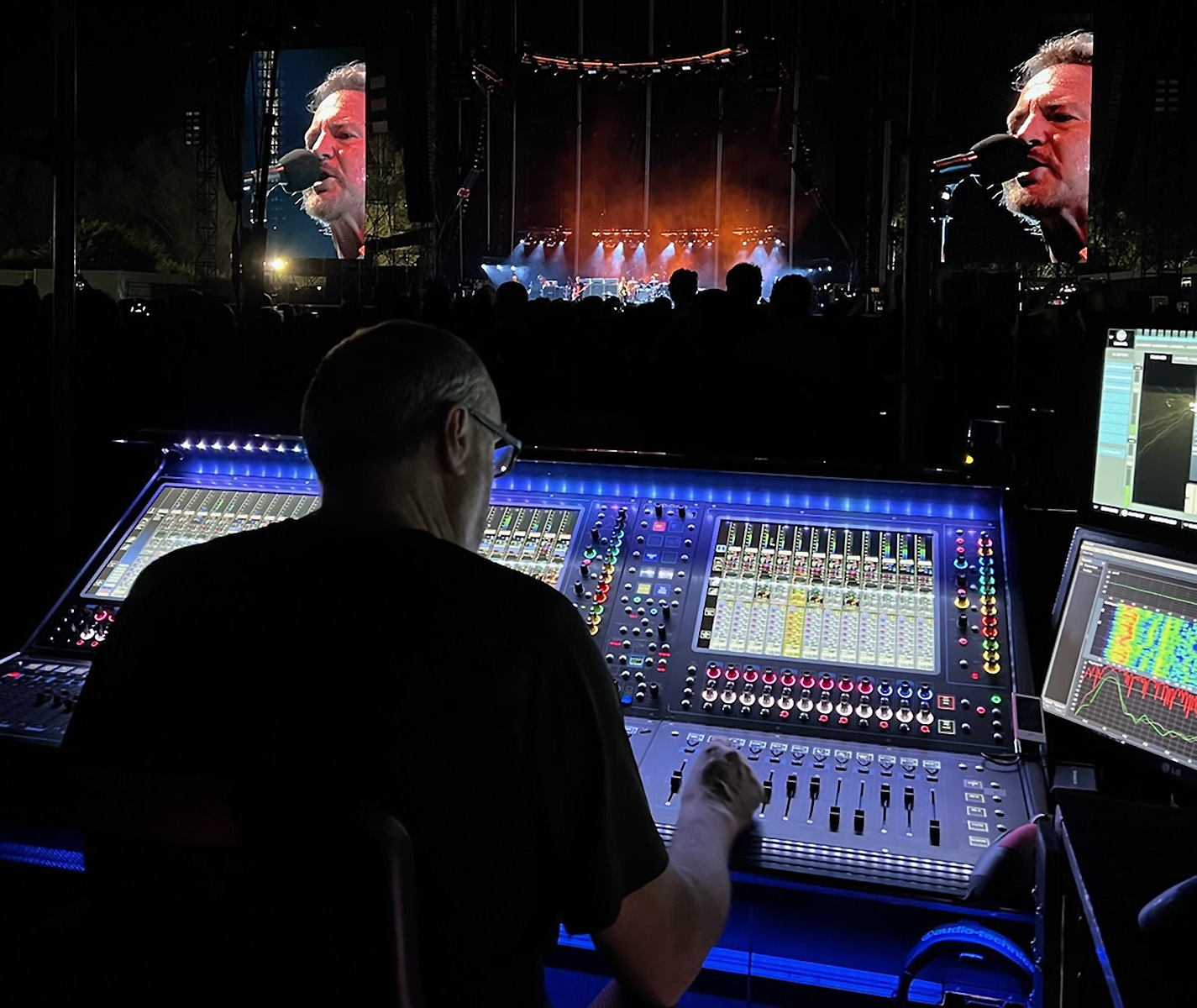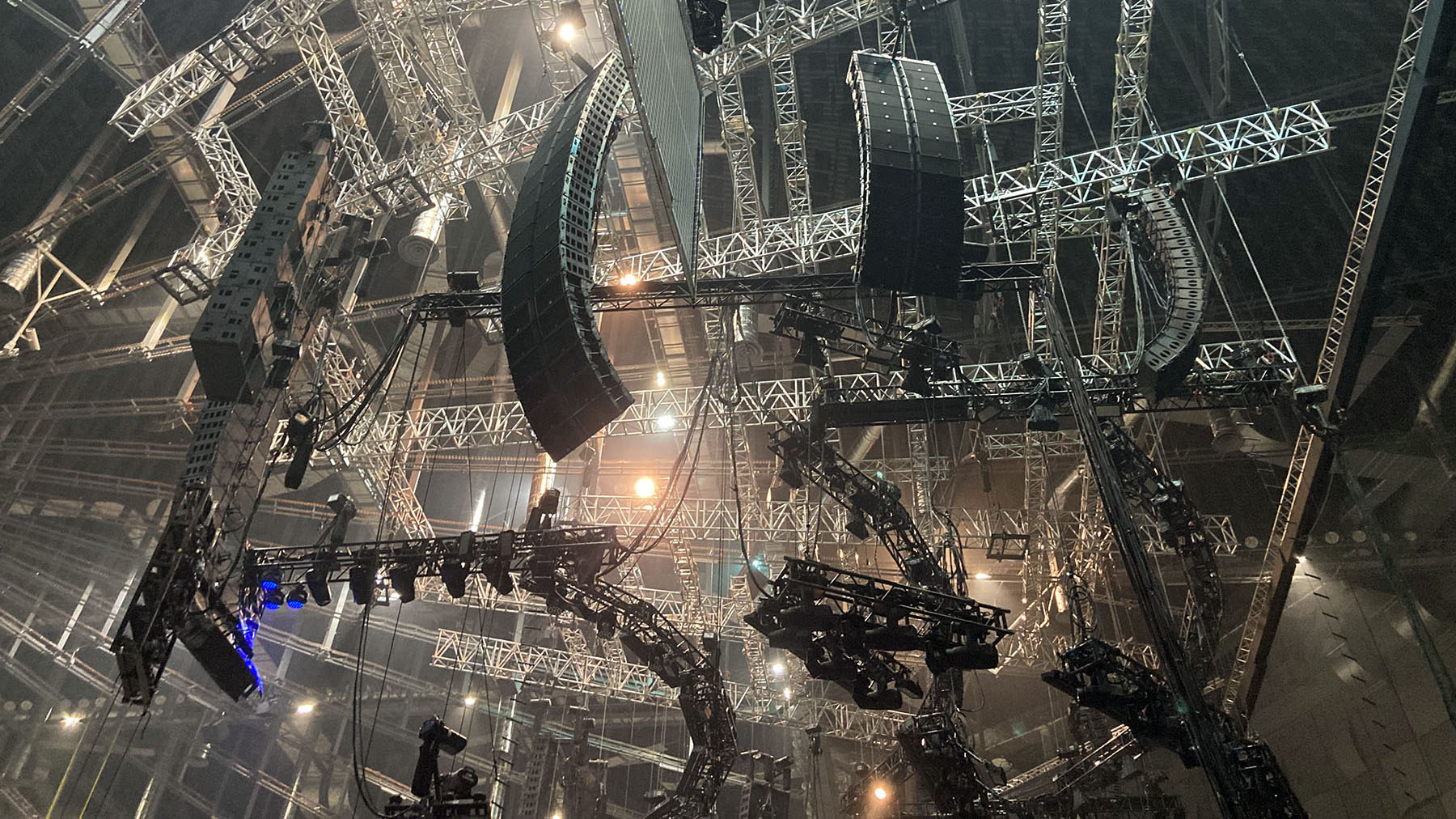In March of 2020, just as Pearl Jam was set to drop Gigaton, its eleventh studio album and first proper recording since 2013’s Lightning Bolt, the band was on the cusp of touring North America before heading on to Europe to support the new release. After fast-forwarding through two-plus years of a global pandemic, the band has finally brought that plan to fruition and is once again carrying its preferred L-Acoustics K1 loudspeaker system on the road to best capture the band’s intensity and musicality on its packed U.S. and European arena tour.
In May this year, southern California-based RAT Sound System provided the full sound reinforcement system for Pearl Jam’s first seven US shows. A month later, the band took its RAT-supplied DiGiCo Quantum338 FOH and dual-SD5 monitor control packages over to Europe for a 15-date June and July run, where London-based Britannia Row Productions picked up the loudspeaker deployment role. Starting in early September, Pearl Jam will make its second North American sweep, with 11 more shows spanning the eastern half of the continent.
[L-Acoustics Immersive Audio Technology Takes Crowds to the Third Dimension]
“L-Acoustics has long been my favorite PA,” shared Greg Nelson, who has been manning Pearl Jam’s front-of-house mix since 2004, when the band toured with its first V-DOSC system before transitioning to K Series six years later. “There is something about how smooth the low-mids are and the basic warmth of the PA. I can get Ed’s voice to sound a very specific way with K1 that I just can’t ever seem to achieve with other PA systems.”

The typical loudspeaker deployment for most shows on the Gigaton Tour features left and right main arrays of 16 K1 over six K2 down-fills, with out-fill hangs of 12 K1 over six K2 per side. Arrays of 14 K2 each extend reinforcement for 270-degree coverage, with an additional 18 Kara used either as delay or rear-fill, depending on the venue geometry.
[Check Out the AV that Rocks Between the Dawn and the Dark of Night]
For low-end, left and right hangs of eight KS28 subs are flown in cardioid configuration, bolstered by four more ground-stacked KS28 per side below. Front-fill is achieved by a combination of four Kara spread across the stage lip, and four horizontally arrayed A15 per side on the deck under each K1/K2 array, with monitor side-fills comprised of left/right hangs of four K2. Two L-Acoustics P1 Milan-AVB processors located at Nelson’s FOH house mix position drive the system, which is powered by a grand total of 74 LA12X amplified controllers.

According to Andrew Gilchrest, the band’s system engineer since 2014, L-Acoustics gives him the requisite design tools to ensure optimal deployment for every show. “I have drawings of most of the venues we’ve been playing, so it’s nice to have a good idea before arriving onsite each day,” he says. “My typical process includes verifying a few measurements to confirm the accuracy of my drawing, then placing the stage correctly in the room file. I have our full system saved as a speaker file that I import into the drawing. From there, I rely heavily on Soundvision’s Autosplay and Autofilter functions to find the most even venue coverage for each array. On this run, I’ve been employing the LF Autofilter on all arrays, which has given us a very noticeable improvement.
[AV Network top stories, product announcements, and expert insights]
“Before arrays are taken to trim, we use load-checker to verify that each zone has the correct number of boxes. For tuning, I’ve learned to spend more time verifying that things are plugged in correctly than actual tuning. For the venues we’ve been playing, the system is extremely predictable and needs very minor tweaks on a day-to-day basis.”

Gilchrest adds that the P1 processors have come in handy for several situations with in-house delays. “I’m able to have the entire system in Network Manager, turning on and off zones and setting delays and EQ, which is way easier than having a separate drive system,” he describes. “In fact, we ran into a situation where I ended up with ten minutes to set the delay times and levels for three zones of house delay, and I finished with time to spare thanks to having the zones in Network Manager.”
